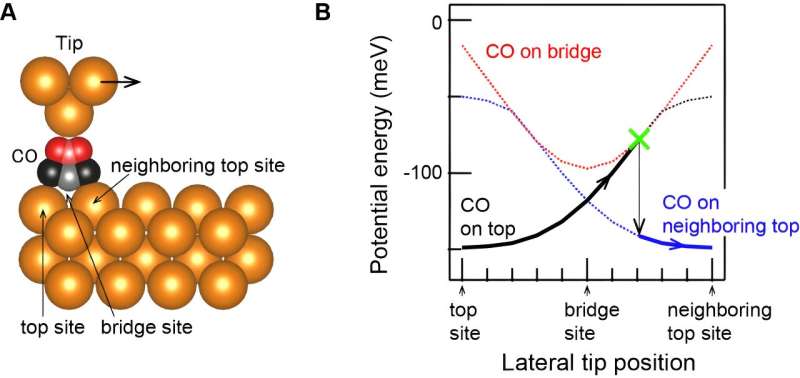This article has been reviewed according to Science X's editorial process and policies. Editors have highlighted the following attributes while ensuring the content's credibility:
fact-checked
peer-reviewed publication
trusted source
proofread
Why does it get hot when you rub things together? Unraveling the mystery of dynamic friction at the atomic level

Friction, an everyday phenomenon, has perplexed scientists for centuries. Though extensively researched, our understanding remains fragmented, primarily due to the multifaceted interactions that span across varying scales. Achieving an accurate grasp of the precise contact conditions between objects has been a longstanding challenge, a feat recently made possible through advancements in scanning probe microscopy.
Yet, even with these technological breakthroughs, the intricacies of dynamic friction—the force needed to maintain the movement of a molecule—have remained elusive. While scientists can measure static friction by moving a single molecule on a surface, both the measurement and theoretical understanding of dynamic friction have yet to be fully unveiled.
Now, writing in Physical Review Letters and Physical Review B, a collaborative team from Kanazawa University (Japan), the Donostia International Physics Center (Spain), and the University of Regensburg (Germany) report their groundbreaking study that dives deep into this challenge. They meticulously examined the manipulation of a carbon monoxide (CO) molecule on a single-crystal copper surface using an atomic force microscope.
Backed by ab initio calculations, their findings shed light on how the CO molecule positions change relative to the microscope tip and surface, as well as the relationship between the motion of the molecule induced by the tip, energy dissipation, and both static and dynamic friction.
This research stands out for its unequivocal clarity on the friction process. Not only does it provide fresh insights into a long-studied phenomenon, but it also paves the way for future studies on energy dissipation relaxation processes.
More information: Norio Okabayashi et al, Dynamic Friction Unraveled by Observing an Unexpected Intermediate State in Controlled Molecular Manipulation, Physical Review Letters (2023). DOI: 10.1103/PhysRevLett.131.148001
Norio Okabayashi et al, Energy dissipation of a carbon monoxide molecule manipulated using a metallic tip on copper surfaces, Physical Review B (2023). DOI: 10.1103/PhysRevB.108.165401
Journal information: Physical Review Letters , Physical Review B
Provided by Kanazawa University



















